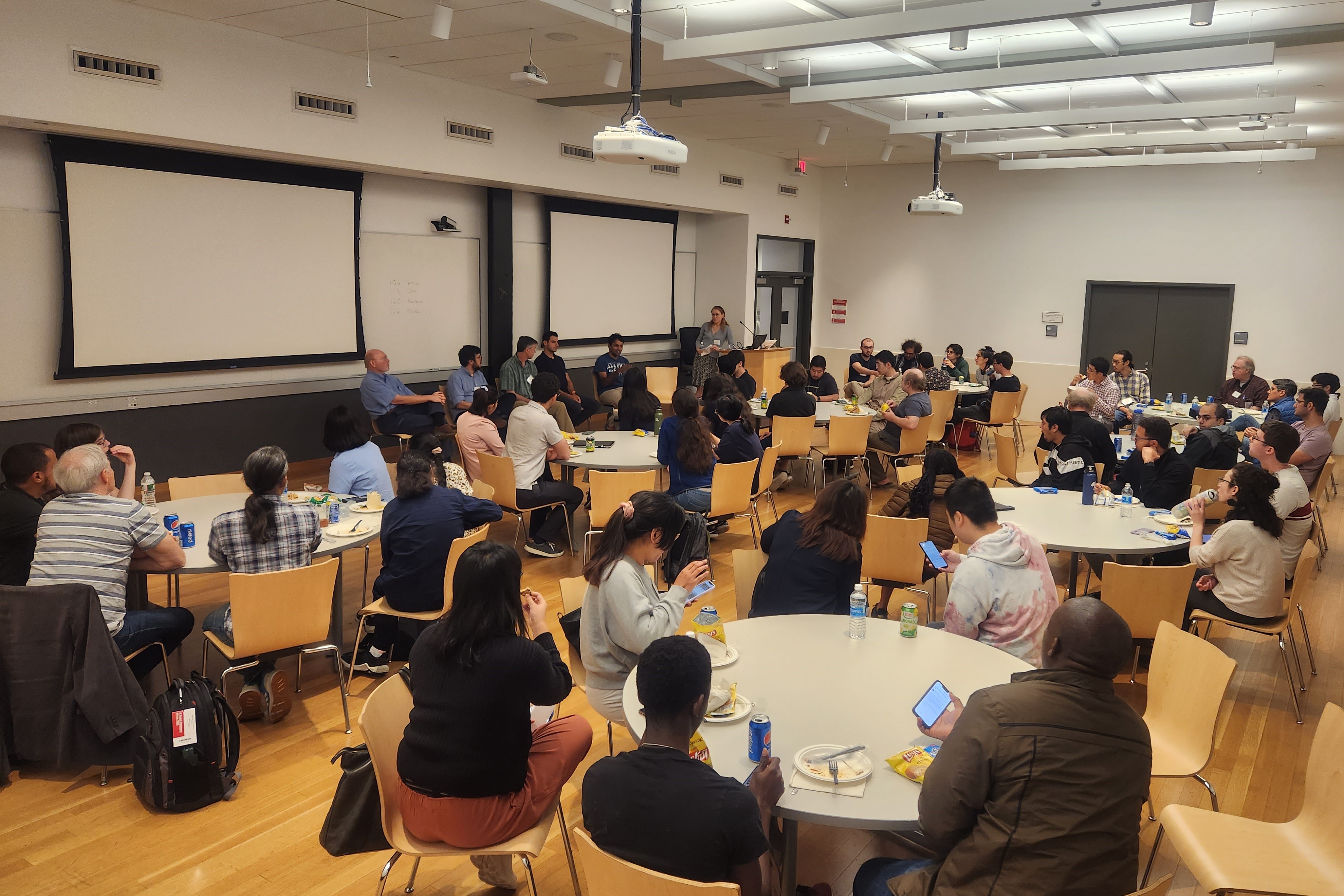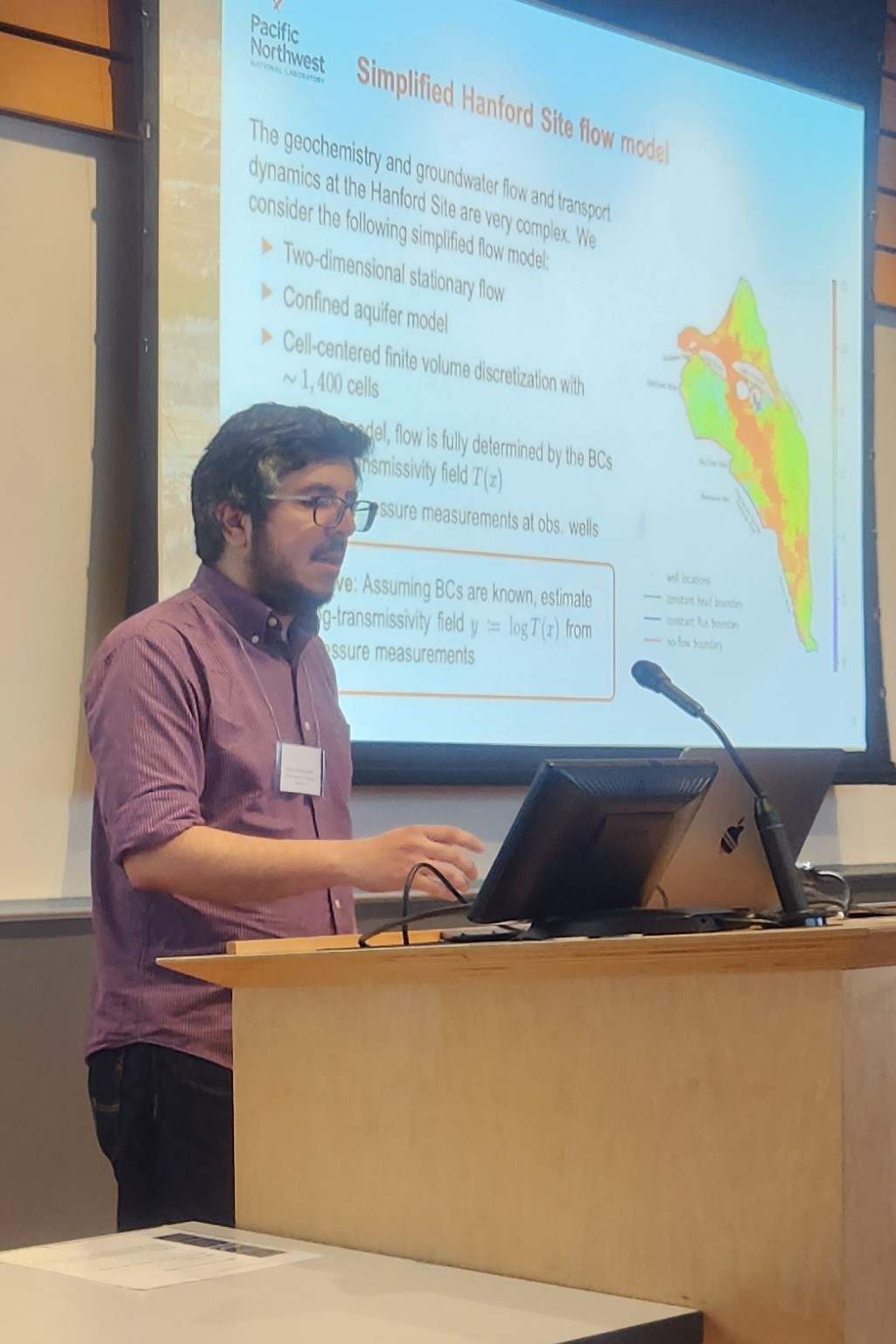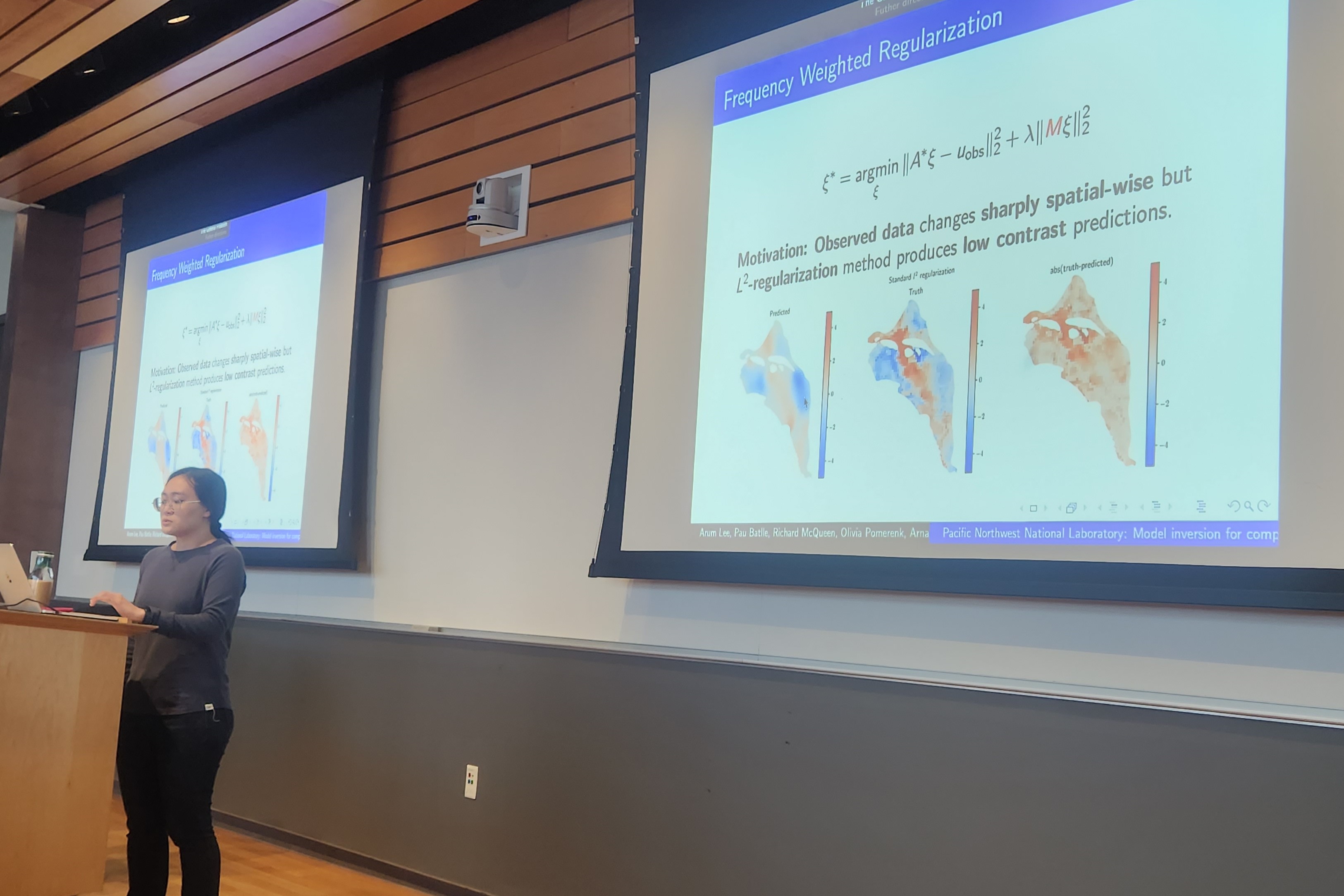PNNL Experts Highlight How Math Tackles Industry Challenges
Students created models that supported remediation strategies at the Hanford Site

Graduate students and early-career postdocs with industry leaders at the Mathematical Problems in Industry Workshop hosted by the Society of Industrial and Applied Mathematics.
(Photo by Richard O. Moore | Society of Industrial and Applied Mathematics)
Pacific Northwest National Laboratory (PNNL) served as an industry partner for the Mathematical Problems in Industry Workshop (MPI Workshop) hosted by the Society of Industrial and Applied Mathematics (SIAM).
SIAM runs an MPI Workshop each summer to bring together graduate students and early career postdocs in the mathematical sciences with industrial and government partners to work on challenges faced by industry partners.

Senior Technical Advisor Aaron Luttman at PNNL and member of SIAM’s Committee on Applied Mathematics Education was excited when SIAM came to PNNL and offered the opportunity to participate in an MPI Workshop.
"Working with such a diverse and talented pool of early career researchers is a unique opportunity to recruit students and staff who are already trained in the art of solving applied, mission-focused problems,” said Luttman.
Remediation Strategies for the Hanford Site

Luttman joined forces with Mathematician David Barajas-Solano who generated and participated in the project proposal, “Model inversion for complex physical systems using low-dimensional surrogates.” The project was based on PNNL’s critical need for evaluating remediation strategies and performing exposure assessments of groundwater flow and contaminant transport at the Hanford Site—one of the largest cleanup efforts in the world which manages the legacy of five decades of nuclear weapons production.
Barajas-Solano challenged students to construct data-driven surrogate models for some of the Hanford Site’s measurable quantities of interest as a function of the site’s hydrogeological properties. Then with these models, students recalibrated computer models of groundwater flow at the Hanford Site using realistic data samples. By successfully calibrating groundwater flow models, PNNL can estimate contaminant movement at the Hanford Site under different scenarios, thus speeding up the process and decreasing the cost of evaluating different remediation strategies.
As the PNNL representative for the project, Barajas-Solano felt excited because this was his first time participating in a SIAM MPI Workshop. “I think PNNL’s participation in the workshop went well, and I hope participants had as much of a good time as I did. It was very rewarding to see students tackle the scientific challenges I find fascinating and formulate possible solutions,” said Barajas-Solano.

Staying Engaged
The next SIAM event PNNL is scheduled to participate in is the Pacific Northwest Section meeting in Bellingham, Washington, from October 13–15.
“PNNL’s continual engagement with SIAM is allowing us to build pipelines to students in the mathematical and data sciences who can become the next generation of PNNL researchers,” said Luttman. “These connections help ensure that PNNL has the right staff to address our nation’s scientific and national security challenges.”
Published: August 24, 2023